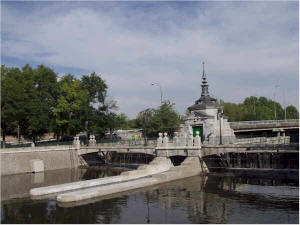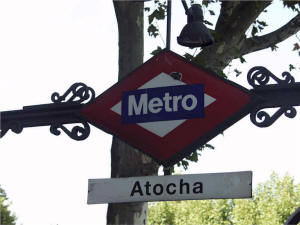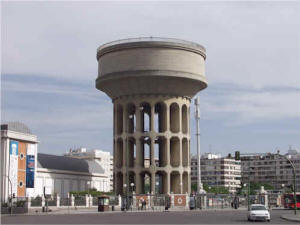| Madrid 30th Sep – 3rd Oct 2004 Researched and led by Sue Hayton |
|
|
Madrid lies in the centre of Spain and has been held by the Visigoths and the Moors as well as the Houses of Castile and Leon.
Since 1607 it has been the capital of a united Spain and was European City of Culture in 1992.
As a capital, it is a vibrant city full of exciting architecture as well as quieter corners full of interest. It is one of the few capital cities without a major river, although Manzanares has been called 'a ditch learning to be a river'! |
 |
| The Gran Via was constructed in the 1920s as a kind of ceremonial way. It is now lined with showcase buildings in many styles including art deco. Of particular note is the city’s first sky scraper, the Telefónica, designed as the city’s first telephone exchange in 1929 as well as the fine art deco Capitol cinema. Many of the city’s finest banks and commercial buildings were also seen. Some of the other great buildings are at the old gates to the city. The former central Post Office on the Puerta del Sol was erected in 1776, surely one of the oldest in the world. It is now the home of Madrid’s regional government. Outside the building is ‘Kilometro Cero’, the point from where all distances in Spain are measured! |  |
| Transport, as usual, is one of our themes. Madrid boasts a number of impressive railway stations, which we were able to visit. Perhaps the most impressive is the Atocha Station of 1878. Part of the enormous building is still in use as a terminus but the rest has been renovated as a public space. Another ‘must’ is the Delicias Station, the city’s first terminus and another vast iron and glass structure, now housing a large and varied locomotive collection. Also significant are the varied market halls dotted around the city and still in use, although not necessarily for food stuffs - another inspired use of cast iron and glass. The city’s metro was inaugurated in 1919 and was one of our means of getting about the city as well as being interesting in its own right. |  |
| Water supply in a large city in a dry country is also critically important and we looked at some important remains from the mid 19th century when the Canal de Isabel II was built to bring water from a new reservoir in the Lozoya Valley in the mountains. There are various reservoirs and water tanks, ‘deposits’ in the city, significant pieces of civil engineering, which were well worth seeing. |  |
| Words and images Copyright © Sue Hayton 2004 | |
